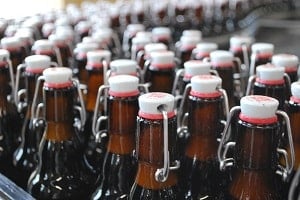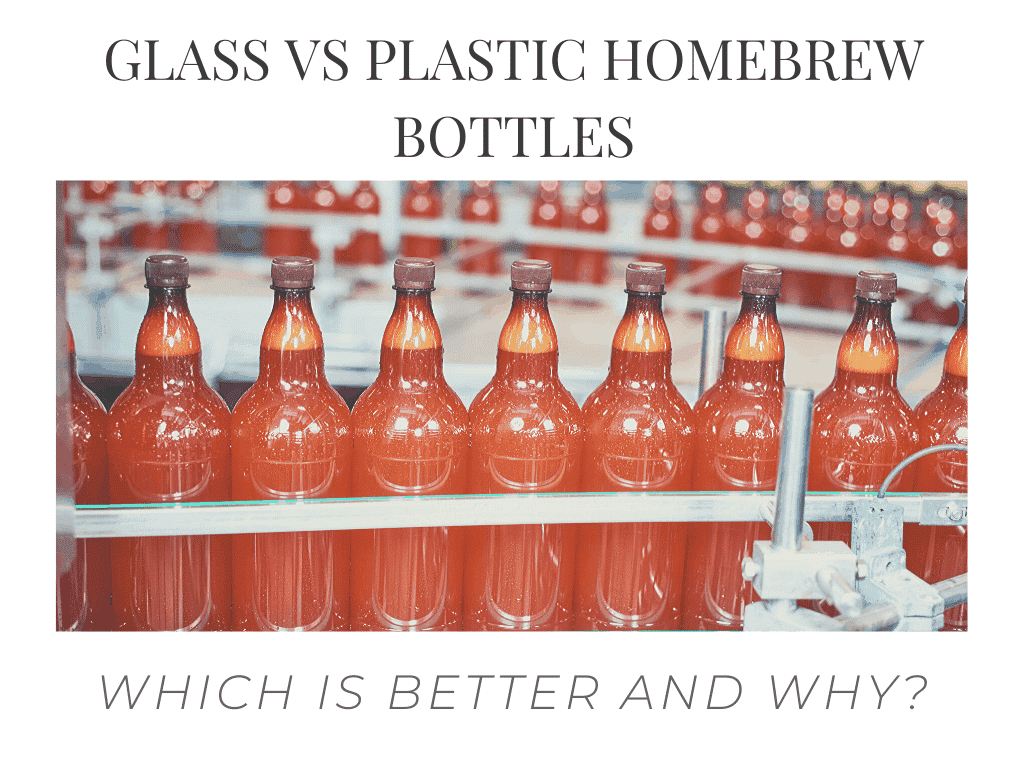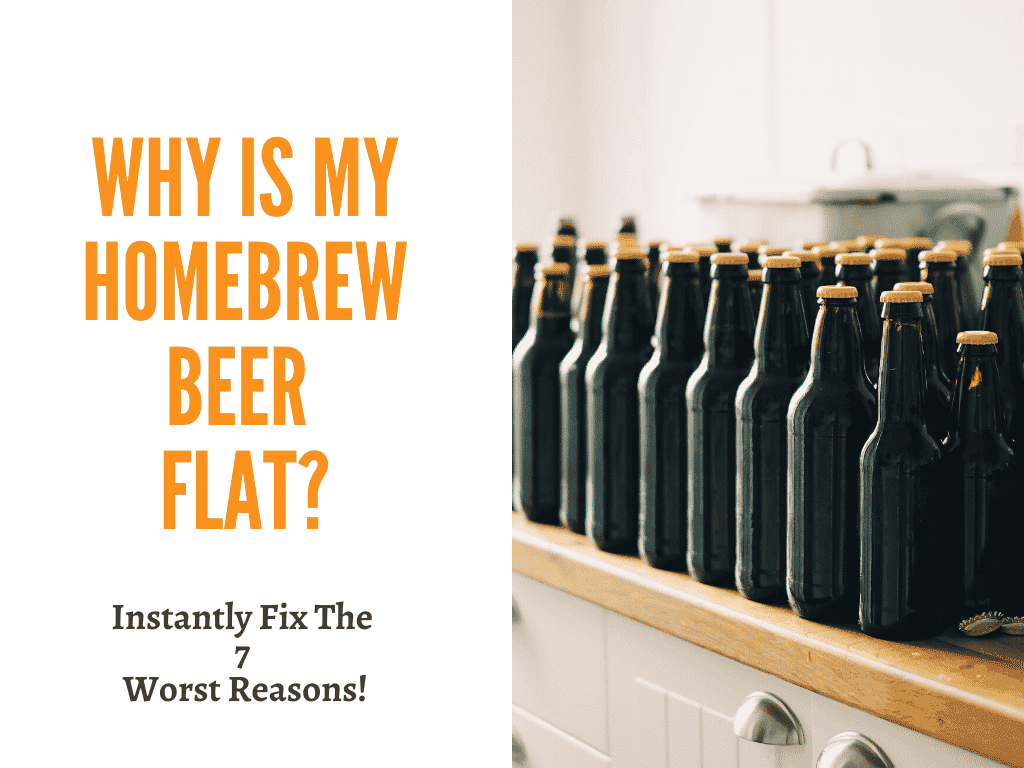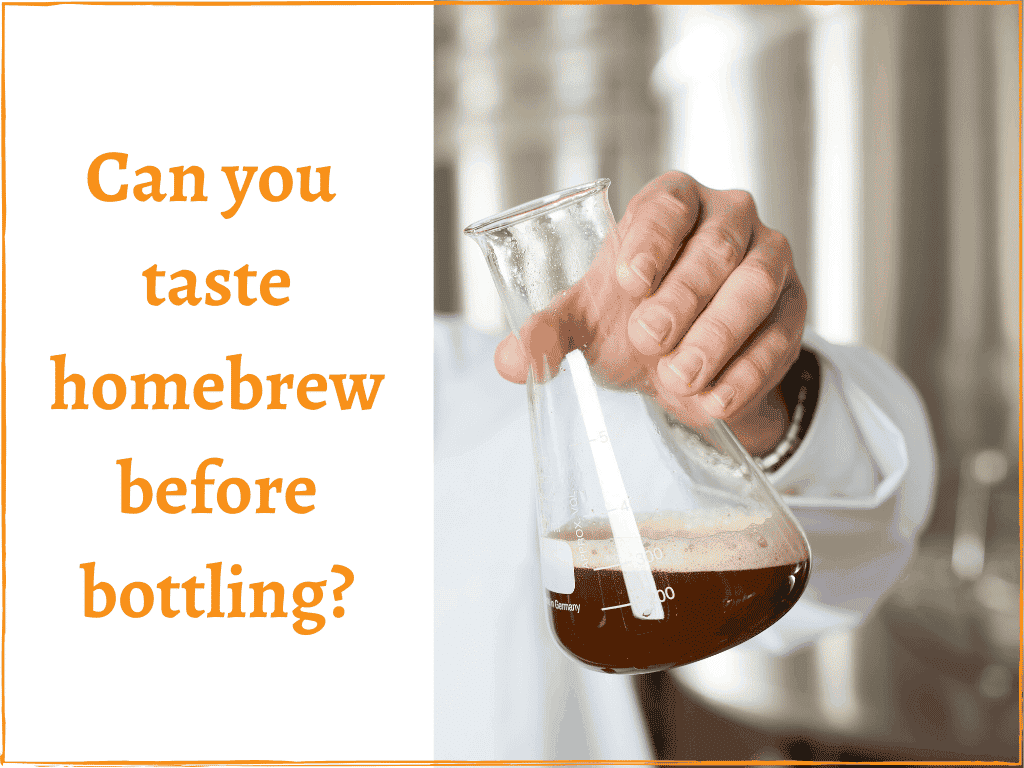One aspect of homebrewing beer that some people don’t enjoy is that their bottled beer can sometimes be cloudy and have sediment at the bottom. In fact, many people wonder if you should filter your homebrew beer before you bottle it to get rid of those issues and make clearer beer. Since commercial beer is usually crystal clear, many people expect the beer they make to look the same way.
So, should you filter your homebrew? Almost all commercial beers are filtered after fermentation and force-carbonated during the bottling or canning process. Homebrew beer, however, requires there to be active yeast inside the beer during the bottling process to create proper carbonation during conditioning. Filtering homebrew could thus lead to flat bottled beer.
Let’s see why filtering your homebrew could actually cause a big problem with your batch of beer, some possible reasons why you might want clearer beer in the first place, and some quick tips on how to clear your beer up without filtering.
Topics We Cover
Can you filter homebrew beer before bottling?
If you are here looking for someone to tell you that it’s cool to filter your homebrew before you bottle it then you will be disappointed with this article.
Since most new homebrewers are going to be using bottles for their first batches, they will be relying on the yeast inside their beer to naturally carbonate the bottles.
This works because a small amount of priming sugar is added to the beer just before it is bottled and the little bit of yeast still swimming around after fermentation is enough to convert this sugar into enough CO2 to make give it some fizz.
Filtering homebrew beer before you bottle it is likely to remove all or most of the yeast still alive inside your beer before it goes into the bottle. In the best case (some yeast makes it through) you will have to condition your beer in the bottle much longer than normal. In the worst case (too much of the yeast is gone) you will not be able to bottle condition because there won’t be enough yeast to convert the priming sugar to carbonation.
Psst! Struggling with flat beer? I have created a resource all about why your homebrew might be flat and what to do about it!
With that being said, there are probably some experienced brewers that routinely filter their beer in some way to help clear it up before bottling. In that case, they have likely experimented with filtering techniques and are probably only using something that will get rid of the big, sludgy stuff in the beer anyway.
Are there any situations that you should risk filtering your beer?
There are lots of reasons that you might want to filter your homebrew:
- Clearer, less hazy looking beer
- Less yeast in the taste profile
- Avoiding sediment at the bottom of the bottle
- Some styles of beer require more clarity
- You want to compete with your beer and clarity is a scoring factor
- Your friends or family don’t want to drink your homebrew because it looks like ‘homebrew’
Yes, these are all real reasons that someone might want to filter their beer, but most of them probably aren’t worth the risk of ruining the batch by getting rid of all of the good yeasties inside the bottle. Filtering means that you will have to force-carbonate your beer somehow before you drink it. If you are bottling the beer, it is almost impossible to do this safely or easily.
At the end of the day, homebrewing beer is never going to be exactly like commercial beer that you would find in the store because it’s just different.
Commercial brewers have to maintain an incredibly high production rate and that often includes filtering their beer and force-carbonating it so that they can reduce the amount of time it takes from start to finish on each batch. The longer the beer sits in the brewery, the fewer dollars that brewery is making.
With homebrew, most people agree that part of the fun is to see the raw, natural process that beer undergoes from start to finish.
Sure, there might be a little yeast or proteins floating around that give it a hazy appearance, but if you wanted a crystal clear beer then you could have just picked one up at the store!
If for whatever reason you feel that you simply must filter, then you will likely need to look into kegging your beer instead of bottling it. That’s because kegging will allow you to force carbonate your beer without the need for the yeast to convert priming sugar to CO2.
Of course, kegging is a whole different world compared to bottling your beer, so we’ll have to leave that for another day.
If you don’t want to (or can’t afford) kegging right now, read on to the next section to get some quick tips to help make your beer clearer that won’t break the bank or cause you a headache on brew day!
How to get clearer homebrew beer
So. Let’s talk about what we can do on brew day and bottling day to get our beer a little clearer without sacrificing our yeast in the name of clarity!
Tip #1 – Poor your beer better
This might sound silly, but it could be a game-changer for you.
Maybe you are used to simply grabbing a commercial beer, prying off the top, and pouring it quickly into a glass before you drink it. Maybe you always drank out of the bottle before and have NEVER poured a beer out of a glass!
To avoid stirring up the yeast and other sediments at the bottom of your bottled homebrew, you will need to pour more slowly and leave just a little bit of beer at the bottom of the bottle. Once you get used to it, you’ll be surprised just how much stuff you can keep out of your beer just by pouring correctly.
Tip #2 – Avoid disturbing the trub while moving beer from fermenter to bottling bucket
Most brewers will rack their beer from the fermenter into a bottling bucket so they can leave the yeast cake behind and make the bottling process easier.
While you are racking, keep the tube about an inch or so under the top of the beer and slowly move it down as the level of the beer gets lower. This will help prevent the trub at the bottom of the fermenter from getting sucked up into the tubing and find its way into the bottling bucket. Just be careful not to let it get so high that it sucks air into the tube – oxidation is bad!
Tip #3 – Use a high-flocculation yeast
Every strain of yeast is a little bit different and one of those differences comes from its level of flocculation. Flocculation is just a fancy word that describes how much the yeast will clump together and settle out of the wort during fermentation.
To get the clearest beer, choose a medium or high-flocculation yeast.
Just be mindful that some styles of beer actually require a low-flocculation yeast to achieve the correct look or flavor profile!
Tip #4 – Check your recipe
Some beer-making ingredients are more prone to causing cloudiness in the finished product.
For a chance at the clearest beer, avoid using high-protein malts as well as adjuncts like unmalted barley, wheat, or flaked grains in your recipes.
Tip #5 – Make sure your brew process is on point
I am not going to go too far with this tip because it could fill up a whole book, but basically, you want to make sure that your temperatures are on point at each stage of the brewing process. Briefly, you’ll want to pay special attention to these temps:
- Mash – Usually this will be between 148-158 °F
- Sparge – Typically between 168-170 °F
- Hot break – A rolling boil for at least 60 minutes while brewing to ensure a sufficient hot break
- Cold break – Drop your wort below 70 °F as quickly as possible to get suspended particles to fall out.
Tip #6 – Wait longer
This sounds like a dull tip but it’s super important.
We all know that homebrewing is a hobby that requires lots of patience and clarity in your beer is no exception to this rule.
Be sure that you are giving your beer plenty of time to ferment and you could even consider a secondary fermentation if you want to go through the extra steps. The longer you give the yeast a chance to do their work, the more will eventually clump up and fall out of the liquid to settle at the bottom.
Also, be sure that you are giving your beer at least a few weeks to condition in the bottle.
Since you are essentially reactivating fermentation (at a much smaller scale) when you bottle with priming sugar, be prepared to wait for that process to finish and give your beer a more mature flavor and look!
Tip #7 – Add finings to the fermenter or bottles
Assuming that you have implemented all of the other tips, you could also look at adding some common ingredients called ‘fining agents’ to your beer.
Here are the most common ones to use:
- Irish moss/Whirlfloc – A special kind of seaweed that is added during the hot break at the last 15 minutes of the boil for best results.
- Chillguard – a silica-based gel that you can add to the fermenter about 5 days before racking into the bottling bucket.
- Gelatin – The same common gelatin that you can find in the grocery store can actually make your beer clearer! Mix 1 tsp into a cup of hot (not boiling) water and mix into the fermenter about 5 days before racking.
- Isinglass – Normally used by commercial brewers, this is collagen sourced from fish bladders that you can find sold in ‘instant packs’ to add to your fermenter. Same instructions as most things, add 1 tsp to hot water and mix into your fermenter about 5 days before racking.





